Why do you need instant pay stubs, and why does authenticity matter?
Summary: When you’re applying for a rental, auto loan or business financing, time gets tight. People search for “instant pay stubs” because they need proof of income fast. Yet authenticity and accuracy are non‑negotiable—fabricated or sloppy stubs can mean rejections or legal trouble. This guide shows how to get legitimate pay stubs quickly, what the law allows, and how expert formatting speeds approvals. :contentReference[oaicite:0]{index=0}
Last updated: August 2025
Ever scramble to produce pay stubs at the last minute? A landlord might ask for the last three pay periods, or a dealer may want proof of income before releasing a vehicle. In a world of instant downloads, a quick generator can look tempting. But speed without authenticity backfires.
Lenders and property managers compare pay stubs to bank deposits and annual tax forms. If the math or dates don’t reconcile—or if the document looks “off”—your application may be delayed or denied. Worse, changing facts, however small, can cross legal lines.
At FinancialDocsProvider.com, we specialise in proof of income editing and document packaging. Our role is to format, organise and present your authentic records so reviewers can verify them quickly. We never fabricate numbers, dates, employers or accounts. Throughout this article you’ll find links to related guides, including pay stub formatting mistakes and our comparison of pay stubs vs bank statements.
Related Entities & Terms
- Payslip / pay stub / pay advice / payroll statement
- W‑2, 1099‑NEC, 1099‑K (US); P60, P45, SA302 (UK); T4, T4A, Notice of Assessment (NOA) (Canada)
- Year‑to‑Date (YTD) earnings; gross vs net pay; regular vs overtime hours
- Employer Identification Number (EIN), Social Security Number (SSN), National Insurance (NI) number, Social Insurance Number (SIN)
- Payroll providers (ADP, Paychex, Gusto), direct deposit statements
- IRS, CFPB & FTC (US regulators); FCA & HMRC (UK authorities); FCAC & CRA (Canadian regulators)
- PDF/A, OCR, metadata, file integrity, accessibility tagging
- Employment verification letters, bank statements, offer letters, profit‑and‑loss statements
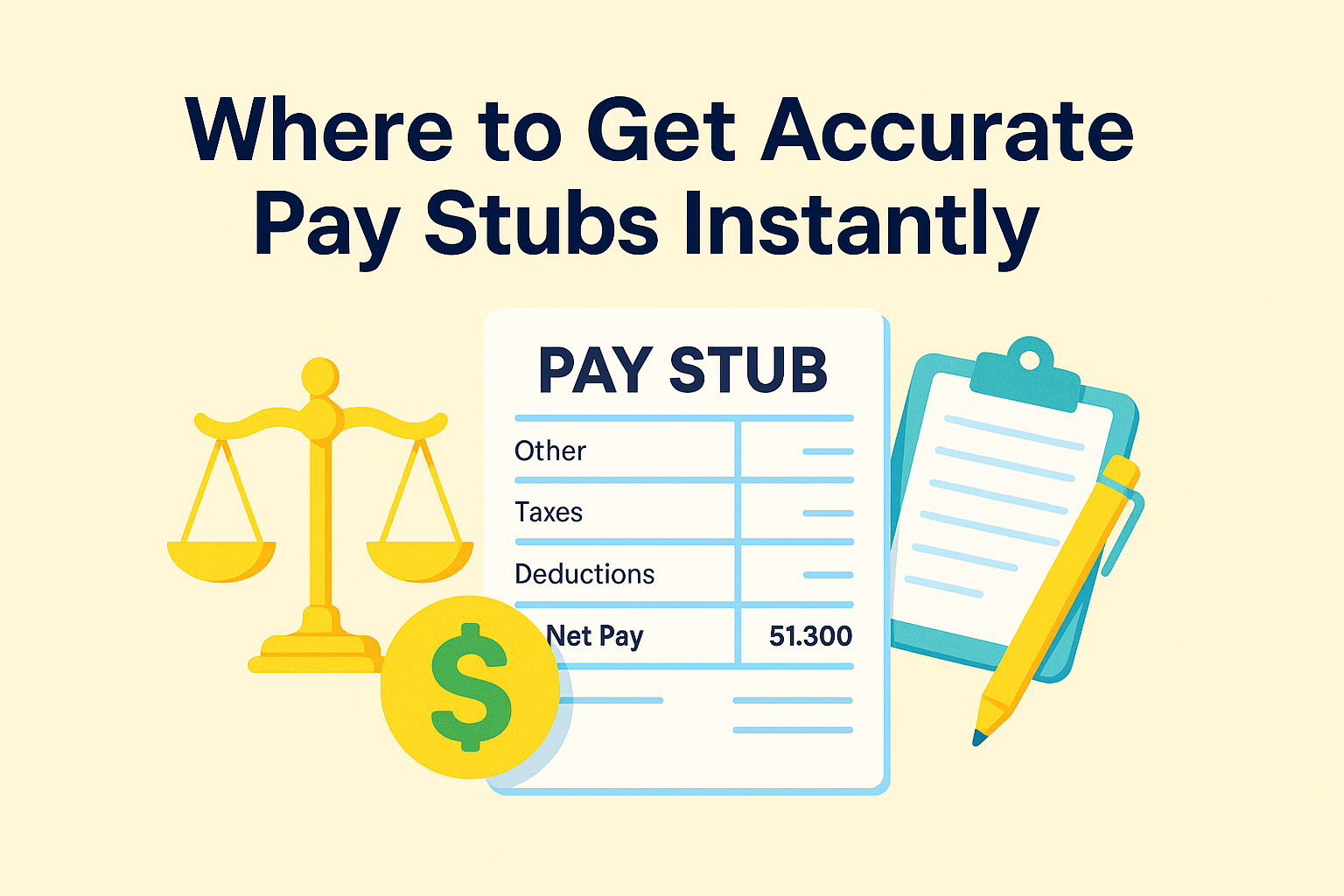
What are the legal basics of instant pay stubs and authenticity?
Summary: In the United States, United Kingdom and Canada, the law draws a bright line between formatting for clarity and falsifying facts. Employers must issue accurate earnings statements that reconcile with annual tax forms, and lenders must assess creditworthiness using reliable information. You may re‑format for readability, but altering amounts, dates or employers can lead to civil or criminal consequences.
United States. Employers engaged in a trade or business who pay employees must file a Form W‑2 for each worker when income or payroll taxes are withheld. Many states also require a pay stub each pay period. Practically, pay stubs should reconcile with annual documents such as the W‑2 or 1099; mismatches raise questions. When you apply for a mortgage or car loan, the Consumer Financial Protection Bureau notes that lenders must provide a Loan Estimate once you supply six items (name, income, Social Security number, property address, estimated property value and desired loan amount). Lenders cannot demand pay stubs or tax returns only to issue that estimate—but they will request them later to verify income and debt‑to‑income ratios.
United Kingdom. The Employment Rights Act requires employers to provide payslips on or before payday. GOV.UK guidance says your payslip must show earnings before and after deductions, itemised variable deductions (tax and National Insurance), and hours worked if pay varies. Payslips can be electronic or printed, but the mandatory information stays the same. For consumer lending, the Financial Conduct Authority’s Consumer Credit Sourcebook (CONC) requires a reasonable creditworthiness assessment before entering or increasing a regulated credit agreement. That assessment must use sufficient information from the customer and, where appropriate, credit reference agencies. In practice, lenders look for payslips, P60s and bank statements to confirm income and affordability.
Canada. Provincial labour standards set what must appear on a pay stub. For example, Saskatchewan requires that each payday includes a statement of earnings with the employee’s name, pay period dates, hours, rates, regular and overtime wages, itemised deductions, total earnings and net pay. Many provinces permit electronic statements as long as employees can access and print them. At tax time, employers issue a T4 summarising total remuneration, and pay stubs should reconcile with the T4 and the Canada Revenue Agency’s Notice of Assessment. Lenders commonly request recent pay stubs plus a T4 and NOA to cross‑check deposits.
These legal basics underscore why authenticity matters. Editing for readability or privacy is fine; changing facts is not. If something looks wrong, ask payroll to correct the record at the source. Our pay stub generator guide for freelancers explains how to convert real invoices and platform payouts into compliant stubs—presentation, not invention.
Which edits to pay stubs are allowed?
Summary: Permissible edits improve legibility, organisation and privacy without changing underlying data. You can tidy layouts, convert images to searchable PDFs, redact sensitive identifiers and add page numbers. These changes help reviewers verify income quickly while keeping personal information secure.
Below are common edits our team performs that sit well within legal boundaries, with examples to show how they help:
Redaction & privacy
- Mask only sensitive identifiers. It’s acceptable to hide portions of your SSN, NI or SIN for privacy. Do not obscure employer names, pay periods, amounts or tax lines—regulators expect these to remain visible. Example: show “XXX‑XX‑1234,” not a fully blacked‑out line.
- Remove extraneous account numbers or barcodes. Some payroll exports include internal codes that add clutter. Trimming them keeps the document focused and reduces confusion for underwriters.
- Limit visible contact details. If a stub lists your personal phone or home address in multiple places, we keep one clear instance and remove duplicates to minimise exposure while retaining all required information.
Layout & export fixes
- Convert photos to PDF. If your stub is a mobile snapshot, running OCR produces a clean, selectable PDF. Reviewers can copy figures directly into calculators, reducing re‑typing errors.
- Align columns and headings. Wrapped totals and broken tables create mistakes. We straighten misaligned rows, standardise fonts and ensure totals sit under the correct headers so math checks are fast.
- Add page numbers and descriptive file names. Sequential page numbers and names like “2025‑07‑15_PayStub.pdf” help reviewers track multiple periods and spot missing pages instantly.
- Bundle multiple stubs. Lenders often want three to six pay periods plus the year‑end form. We combine them into a single PDF with a contents page and bookmarks to streamline review.
- Preserve logos without distortion. We keep original employer branding intact and avoid stretched or low‑resolution graphics that can raise unnecessary suspicion.
Accessibility & quality
- Improve resolution. Blurry scans are a top reason for rejection. We remove shadows, correct tilt and export at 300–400 DPI so each number is crisp and legible.
- Add accessibility tags. Tagging documents for screen readers (PDF/A compliance) supports inclusive review and often earns goodwill from institutions with accessibility policies.
- Insert brief explanatory notes. If pay varies because of commissions, seasonal hours or overtime, a short footnote can pre‑empt questions. Example: “Overtime due to holiday staffing, Week 52.”
None of these edits change gross pay, deductions, tax withholding or employer details. They simply present the information clearly. When you work with us, we document every change and retain your originals to maintain a clean audit trail. For more lawful adjustments, see avoiding pay stub formatting mistakes.
Which pay stub alterations are illegal and why?
Summary: Any change that misrepresents facts—modifying amounts, dates, hours or employer details—is illegal. Using falsified documents to obtain credit, housing or benefits can lead to denials, civil liability and even criminal charges.
Here are the changes you must never make, and why they are risky:
- Changing numbers. Increasing gross wages, overtime or YTD totals to meet a threshold is misrepresentation. In the US, employers must file accurate W‑2 statements; mismatched figures can implicate tax or wire fraud. In the UK and Canada, payslips and T4s must match actual remuneration.
- Backdating or forward‑dating pay periods. Shifting dates to create extra “recent” stubs is deceptive. Underwriters cross‑check dates against bank deposits and payroll schedules.
- Inventing employers or roles. Fake company names or inflated titles trigger verification calls and automated rejections. Fraudulent statements can expose you to legal action.
- Forging tax forms. Fabricated W‑2s, P60s or T4s are filed with tax authorities. Discovery can lead to fines, prosecution and long‑term lending consequences.
- Round‑number red flags. Perfectly rounded figures (e.g., $4,000 every period) look suspicious. Real stubs show cents and fluctuate with taxes, deductions and overtime. “Tidying” numbers can backfire.
Mini‑scenarios: A renter adds $200 to each pay period to meet a 3×‑rent rule. The landlord checks deposits and declines the application. A car buyer shifts dates to show “continuous employment.” The lender’s verification call exposes the mismatch. A contractor edits a T4 to qualify for a line of credit. The bank requests the CRA NOA and flags the file for fraud review. The pattern is the same: misrepresentation leads to denials and potential legal exposure.
Why do people take the risk? Many assume lenders only care about averages or thresholds. In reality, underwriters triangulate your pay stubs with bank statements, tax returns and employer confirmations. In the UK, the FCA requires creditworthiness assessments based on sufficient, verified information. In the US, the CFPB notes lenders cannot require documents to issue a Loan Estimate—but once verification starts, numbers are checked carefully. If a stub is wrong, ask payroll to correct it. Never “fix” the numbers yourself.
When do you need professional pay stub formatting?
Summary: Professionally formatted pay stubs speed approvals in high‑stakes situations where clarity and trust are vital. Landlords, auto lenders, small‑business financiers and immigration officers rely on clean, consistent documentation to assess ability to pay. Self‑employed individuals and gig workers benefit from a consolidated, standardised presentation of their earnings.
Renters & property managers
Property managers want steady, sufficient income and typically request two or three recent pay periods. Tiny fonts, clipped totals or unreadable deductions cause delays. A professional service converts raw PDFs or screenshots into legible documents with clear columns, totals and pay period dates. Our formatting mistakes guide includes cases where misaligned tables or missing YTD figures cost applicants an apartment.
Example: Ana’s payroll system exported three separate files, each with different font sizes. We combined them into a single, searchable PDF, aligned the deduction columns and added page numbers. Her property manager approved the lease the same day.
Auto lenders & dealerships
Auto loan underwriters calculate debt‑to‑income ratios from your stated income and existing debts. In the US, they often ask for a recent pay stub, a W‑2 and bank statements. Because decisions must rely on sufficient information, any ambiguity slows the process. If your stub is a photo, converting it to a searchable PDF and aligning columns prevents manual entry errors. A short cover page referencing each pay date to its corresponding deposit can shave days off underwriting.
Example: Malik submitted a cropped photo where net pay was cut off. We rebuilt the table and added a “deposit map” that tied each stub to a bank entry. The dealer cleared his file without further questions.
Small business & SBA/SME loans
For business financing, lenders or the Small Business Administration commonly request months of stubs plus your year‑end W‑2/T4 and bank statements. We prepare a “proof of income packet” listing each pay period, gross and net earnings, matched to bank deposit references. This consolidates information and reduces back‑and‑forth emails. Learn more about combining stubs and statements in pay stubs vs bank statements.
Example: Priya needed a working‑capital line and had variable commission income. Our packet included a one‑page summary explaining the commission cycle and a note on seasonal spikes. The bank appreciated the clarity and moved her file forward.
Self‑employed & gig workers
Freelancers and gig workers lack traditional payslips. Lenders usually ask for invoices, 1099 or T4A forms, bank deposit history and a year‑to‑date summary. A pay stub generator can translate verified earnings into a format underwriters recognise. We gather invoices and platform payouts, calculate gross‑to‑net based on taxes and deductions, and produce a standardised stub that matches deposits. See pay stub generators for freelancers for compliant use—presentation, not invention.
Example: Jorge drove for multiple platforms. We reconciled weekly payouts, flagged incentives separately and created stubs that mirrored actual deposits. His lender accepted the packet alongside his 1099s.
Immigration & other specialized applications
Visa, immigration and school applications may require proof of income. Submit neat pay stubs with tax forms and employer letters. Ensure the name matches your passport, and that dates and earnings are consistent. If you have international income, note currency conversions and keep the exchange‑rate method transparent within your cover note.
Across all scenarios, the message is simple: authentic data, clearly presented, builds trust and speeds decisions.
How does FinancialDocsProvider format pay stubs?
Summary: Our process safeguards your documents while making them cleaner, more professional and easier to verify. From secure intake to final delivery, we emphasise confidentiality, accuracy and speed.
1) Secure intake
- Upload with confidence. Use our secure portal to upload PDFs, payroll exports or high‑resolution images. We never request passwords or bank logins. Files are encrypted and retained only as long as needed for the project.
- Clarify requirements. We ask who will review the documents (landlord, lender, agency), how many periods they require and any formatting rules (e.g., no handwriting, PDF only). Clear scope avoids rework.
- Data minimisation. We collect only what’s necessary. If an item is not needed, we recommend leaving it out or redacting it to reduce exposure.
2) Reconciliation
- Verify math. We confirm hours × rate = gross, and gross minus deductions equals net. If numbers look off, we pause and advise requesting a corrected stub from payroll so the final package aligns with the W‑2/T4.
- Align pay periods. We check chronological order, ensure no gaps, and confirm logical YTD progression. Any discrepancy is addressed before formatting to prevent last‑minute rejections.
- Cross‑reference deposits. Where requested, we map each pay date to the corresponding bank entry to support underwriting checks.
3) Formatting
- Clean layout. We tidy tables, standardise fonts, fix orientation and ensure headings are clear. We add page numbers, consistent file names and an index for multi‑document packets.
- Selective redaction. We mask only sensitive personal identifiers while keeping employer names, dates and earnings visible. Short notes clarify irregularities like commission or overtime months.
- OCR & PDF compliance. For images, we run OCR so text is selectable. We export to PDF/A where feasible for long‑term archiving and accessibility.
4) Delivery & timelines
- Quick turnaround. Most single‑document projects are completed within 24 hours. Larger packets (e.g., six months of stubs plus a cover sheet) may take 48–72 hours. We provide an estimated delivery date at intake.
- Secure download. We deliver via encrypted link or secure email. On request, we can password‑protect PDFs or deliver through your preferred portal.
- Clear boundaries. We never change facts. If a number is wrong, we’ll recommend obtaining a corrected stub from payroll. Our pricing is transparent—see our services page and pricing. Learn about our process or contact our team anytime.
What is the compliance checklist for instant pay stubs?
Summary: A practical checklist helps you confirm that your stubs are complete, accurate and presented to meet reviewer expectations. Use this checklist before submitting any documents.
Checklist items
- Consistent names. Ensure your name and employer’s name match exactly across stubs, tax forms and bank statements.
- Complete pay periods. Include every requested pay period with correct start and end dates. Avoid gaps or re‑ordering.
- Clear gross, deductions and net pay. Label gross earnings, itemise deductions (taxes, benefits, retirement) and show net pay clearly. Totals should add up.
- Accurate YTD progression. Year‑to‑date totals should move logically. If a jump reflects a bonus or overtime, add a brief note.
- Visible taxes and contributions. Do not obscure tax lines or employer contributions. Reviewers look for SS/NI/CPP and EI where applicable.
- Selective redaction. Redact only partial ID numbers and nonessential account numbers. Keep employer, dates and amounts visible.
- Searchable text. Ensure your PDF is OCR’d. Avoid sending photos without conversion.
- Page numbers and file names. Number pages and use descriptive names (e.g., “2025‑06‑30_PayStub.pdf”).
- Include annual forms. If asked, attach W‑2, T4, P60 or NOA and confirm they reconcile with stubs.
- Provide employer contact. Include HR or payroll contact details for verification.
- Check pay frequency. Weekly/biweekly/semimonthly patterns should be consistent. Irregular intervals need a note.
- Match deposits. Where relevant, cross‑reference stub net pay to bank deposits for the same dates.
- Currency clarity. If paid in a different currency, state the currency and, if needed, the conversion method in your cover note.
- Version control. Keep original files and label updated/corrected versions clearly to avoid mixing drafts and finals.
- Accessibility. Add basic tags and readable font sizes so every reviewer can navigate the file.
Document packaging tips
- Bundle logically. Combine multiple stubs into a single PDF with a contents page and bookmarks. This prevents documents from getting separated.
- Cross‑reference deposits. If bank statements are requested, label which deposit corresponds to each pay stub. See our bank statement red flags checklist for preparation tips.
- Stay organised. Maintain a simple spreadsheet with dates, gross, net and YTD figures. You’ll spot discrepancies before a reviewer does.
- Add a brief cover note. For variable income, a one‑paragraph summary of overtime or commission cycles can anticipate reviewer questions.
- Use consistent formatting. Keep fonts, column order and labels the same across months so reviewers can scan quickly.
What red flags should you avoid with instant pay stubs?
Summary: Even authentic pay stubs can raise flags when they’re poorly presented. Avoid the mistakes below so reviewers focus on your actual income, not formatting issues.
- Blurry scans and tiny text. Mobile screenshots compress text and wrap columns. Export a native PDF or scan at 300–400 DPI and run OCR.
- Missing columns or clipped totals. Ensure deduction and employer contribution columns are fully visible. Adjust margins so totals align under the correct headers.
- Inconsistent date formats. Mixing DD/MM/YYYY and MM/DD/YYYY causes confusion. Standardise display format without changing actual values.
- YTD jumps that don’t add up. YTD totals should increase gradually. Large jumps require the relevant stub and a short explanation.
- Over‑redaction. Blacking out employer names, pay dates or tax lines looks suspicious. Redact only what’s necessary for privacy.
- Non‑searchable files. Image‑only PDFs force re‑typing and slow approvals. Make text selectable.
- Distorted logos or mismatched fonts. Altered branding or jarring font changes can look fabricated. Preserve original exports whenever possible.
- Address and tax inconsistencies. Employer addresses, tax jurisdictions and withholding should make sense for the pay period. Relocations or remote work need clear documentation.
- Round numbers everywhere. Perfectly even amounts each period can trigger extra scrutiny. Real pay fluctuates with withholdings and benefits.
For a deeper look at red flags and how reviewers detect forgeries, read pay stub formatting mistakes that trigger rejections. Avoiding these pitfalls helps your authentic documents speak for themselves.
Where can you find official resources and help?
Summary: Regulators publish detailed guidance on pay stubs, employment rights and lending rules. Use these sources for definitive requirements and our internal guides for practical, step‑by‑step advice.
Official regulators
- IRS – About Form W‑2: explains employers’ obligation to issue W‑2s and summarises withholding rules.
- GOV.UK – Payslips: employee rights: details what must appear on a payslip and when it must be provided.
- Government of Saskatchewan – What must appear on a pay stub: lists required items on a statement of earnings.
- CFPB – Loan Estimate information: explains that lenders must provide a Loan Estimate once basic details are provided and cannot require pay stubs until later.
- FCA Consumer Credit Sourcebook (CONC): sets out the rules for creditworthiness assessments in the UK.
Internal guides and helpful links
- Pay stub formatting mistakes that trigger rejections – learn common pitfalls and how to fix them.
- Pay stub vs bank statement: which is better for proof of income? – compare two common types of income documentation.
- How to read a pay stub (simple guide) – understand each section of your stub and how to spot errors.
- Why pay stub generators are essential for freelancers & gig workers – learn how to generate compliant stubs from real earnings.
- Pay stub vs W‑2: which proof of income should you provide? – guidance on when lenders prefer periodical stubs or annual forms.
- Our services page and pricing explain how we can help with pay stub formatting, bank statement editing and more.
- Ready to talk? Contact our team or learn about our process.
Frequently asked questions
Is it legal to generate instant pay stubs online?
Yes—provided the pay stubs reflect real earnings. Many tools can create a stub quickly, but you must supply accurate hours, rates, taxes and employer details. Altering figures or inventing information is illegal and can expose you to fraud charges. Our service helps you format authentic data fast, without changing facts.
How fast can FinancialDocsProvider deliver formatted pay stubs?
Most single pay‑stub projects are completed within 24 hours. For bundles covering several months or multiple document types, turnaround may extend to 48–72 hours. We’ll provide an estimated delivery time after intake, and rush service is available in some cases.
Do lenders accept self‑generated pay stubs?
Lenders accept pay stubs that come from real payroll data—whether issued by an employer or generated with a compliant tool. The key is authenticity. If you’re self‑employed or a gig worker, compile invoices, platform payout statements and tax forms, then generate a stub that accurately reflects those figures. Our team can package a compliant set that lenders recognise.
What should I do if my pay stub contains an error?
Contact payroll or HR immediately. Employers are required to issue corrected statements (such as a W‑2c in the US) when errors are discovered. Do not try to fix the numbers yourself. Once you have the corrected stub, we can reformat it for clarity and consistency.
How can I protect my personal information when sharing pay stubs?
Redact only what’s necessary—typically portions of your SSN/SIN/NI number or bank account number. Do not hide employer names, pay dates or earnings. Use secure portals or password‑protected PDFs to share files, and avoid sending sensitive documents over unencrypted email.
Need accurate, reliable financial documents fast? Contact FinancialDocsProvider.com now.

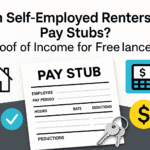


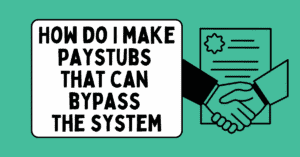

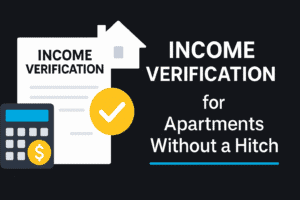
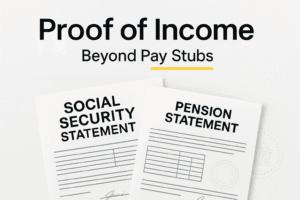
Add comment